|
Notes: St. Ives Station was unstaffed from 6th June 1967.
BRIEF HISTORY OF THE MARCH - CAMBRIDGE LINE
Most of the farmers' lines in the Fens were light in construction and late in completion but one line defied this pattern, the Wisbech, St Ives & Cambridge Junction Railway whose Bill passed through Parliament in 1846; the line was quickly built in an almost straight line across the Fens, opening from March to Wisbech on 3 May 1847. The southern section from Cambridge to St. Ives opened on 17th August 1847 with the middle section from St Ives to March opening on 1st March 1848. The independent company was incorporated into the Eastern Counties Railway in 1848 before completion of the St. Ives - March section and later taken over by Great Eastern Railway in 1862.
 |
The GER were frustrated when Parliament aurhorised a line from March to Spalding which opened on 1st April 1867. The line had originally been conceived by the GER but approval was authorized instead to the rival Great Northern Railway. Many years of quarrelling were finally resolved on 3rd July 1879 when the Spalding line and the March to St. Ives section of the Cambridge to Wisbech line was vested in the GN&GE Joint Railway.
As a means of avoiding Ely, which at that period was greatly congested with traffic from six directions, the March, St Ives to Cambridge route had much to recommend it. Local traffic was largely agricultural but with the opening of the Doncaster to March line the route was busy with coal trains running from the East Midlands towards east London, these were lengthy and slow-moving but immensely profitable to the GER.
Passenger traffic was always light however, as only market towns and villages were served and there were few through trains with expresses usually using the Ely line with Ely becoming the main GER interchange station in northern East Anglia.
Somersham was the only junction station between St Ives and March with the branch line to Ramsey High Street (later Ramsey East) opening on 16th September 1889.
The Cambridge to March line proved reasonably popular through the first half of the 20th century but with the post war popularity of the car, passenger numbers began dropping through the 1950's.
Despite the demise of passenger and freight traffic the line became an important diversionary route. The Flying Scotsman, the Aberdonian and the Night Capital Express have all used the line and it was also used as a trial line for new railway technology such as concrete sleepers, continuous welded rail, multiple aspect signaling (traffic light style) and for experimental rolling stock during the changeover from steam to diesel.
 |
In the 1960's eighty trains a day were timetabled. The last working steam train passed in 1963 and as passenger traffic fell, the coal freight from the north ceased with the enforcement of the Clean Air Act. The line from St. Ives – March closed to goods traffic in 1966 and to passengers on 6th March 1967 but the service from St. Ives to Cambridge survived the |
Beeching Axe despite the stations (except Histon) being sited some distance from the community they served. The passenger service between Cambridge and St. Ives survived until 5th October 1970.
The freight service remained open as far as Histon for seasonal deliveries of fruit to Chivers which ceased in 1983 and a second service as far as Fen Drayton was retained until 1992 because of a long term contract with the Amalgamated Road Stone Corporation of St. Ives for aggregates. In the 1970's, the train made a return trip there every work day though this had declined to once a week by the late 1980's.
There have been numerous campaigns to reopen the line and shortly after closure South Cambridgeshire District Council and Cambridgeshire County Council agreed to pay for the reinstatement of the passenger service between Cambridge and St. Ives but the decision was reversed at the last minute.
Occasional passenger charters visited the branch until the late 1980's and in 1979 The Railway Development Society organised the first of the popular 'specials' from Swavesey to promote the reopening of the line with destinations such as Lowestoft and Christmas shopping in Stevenage; these continued until 1990 but the line was not formerly closed until 2nd August 2003.
Following the final closure of the line most of the track remained in situ apart from the last few miles to St. Ives. The St. Ives bypass (A1096) which opened in 1980, was built on the course of the line from the north into St. Ives, although it just misses the site of the station, the remains of the station was cleared at this time.
In 1994 the County Council put forward a proposal to purchase the land and the surviving track and restore a passenger service; this never happened. In the late 1990’s the Government launched the Cambridge to Huntingdon Multi-Modal Study (CHUMMS), chiefly to address the chronic local traffic congestion.
One of the proposals was for a guided busway along most of the Cambridge - St. Ives route. There was also a further proposal to reinstate the railway but this was rejected by the council who claimed that the guided busway was the only option on the table. The busway would involve replacing the track with a concrete guideway and demolition of the stations to provide car parking. Buses will travel on the guideway along the disused railway line from St. Ives to Cambridge. They will then continue through Cambridge on normal roads and rejoin the guideway at Cambridge Railway Station to travel through to Addenbrooke's Hospital and Trumpington Park & Ride.
In July 2003 a group called Cast.iron was formed putting forward a proposal to reopen the line from Cambridge to Huntingdon in opposition to the proposed guided busway. They proposed to reopen the line in three stages. Initially they were hoping to reinstate a passenger service over the existing track between Cambridge and Swavesey but their long term plan was to electrify the line and extend the track back into Huntingdon with a reconnection to the East Coast Main Line providing a much-needed strategic link for local, regional, national and possibly international services for both passenger and freight traffic.
The busway scheme went before a public enquiry in 2004 and despite local opposition and the campaign to reopen the line between Cambridge and St. Ives, construction started in 2007 with most of the remaining track being lifted. The busway is due to open in spring 2009.
BRIEF HISTORY OF THE ELY & ST. IVES RAILWAY
As the Eastern Countries Railway pushed north from Cambridge towards Brandon it reached Ely in 1845. In the same year the Ely and Huntingdon Railway was authorised but, because of monetary difficulties, only a short section from St Ives to Godmanchester, just over 4 miles, was constructed and opened for traffic in August 1847, the same day as the Eastern Counties Railway opened its line from Cambridge to St. Ives.
Lack of finance resulted in the abandonment of the Ely – St. Ives section but the East Anglian Railway which had acquired the Ely and Huntingdon, resurrected the scheme and obtained an Act of Parliament in July 1849 to build the railway but the authorised time for construction lapsed and the line was subsequently shelved.
The merger of the Eastern Counties Railway with the Eastern Union and other East Anglian railways to form the Great Eastern Railway (GER) in August 1862 caused a change in policy regarding official encouragement for local branch lines. Thus in late 1863, two prominent landowners from Wilburton and Haddenham campaigned for a line winning the support of other local landowners in the area to promote the building of a railway linking Ely with Sutton and a Bill to construct the line received Royal Assent in June 1864. The Ely Haddenham & Sutton Railway was authorised for opening to all traffic on April 7th 1866 with intermediate stations at Stretham, Wilburton and Haddenham.
The railway was opened to the public on 16th April 1866 with little enthusiasm shown by the local population due to prohibitive fares between Sutton and Ely, there were only three passenger trains in each direction per day. Initial passenger receipts were disappointingly low but passenger numbers eventually improved and there were a number of proposals to extend the line to the west and south of Sutton. In 1868, plans were formulated for the Haddenham, Willingham and Longstanton Railway and a Bill for this line was presented to Parliament in 1869; another venture, the Sutton, Mepal and Somersham Railway failed to get its Bill past the parliamentary deadline. With the failure of these local schemes to extend the line westwards to St. Ives the future EHSR was in doubt, but in 1872 a further proposal to extend the line to St Ives was formulated and presented to Parliament in 1876. The extension from Sutton to St. Ives opened on 10th May 1878 with intermediate stations at Bluntisham and Earith Bridge with an increase to five passengers trains per day..
Because of the orientation of the terminus at Sutton a new station was build with the old station being retained for goods. The company was renamed the Ely & St. Ives Railway and was eventually taken over by the Great Eastern Railway in 1898.
The period following the First World War brought a rapid decline in passenger numbers which had always been of a secondary to freight traffic. The stations were all remotely sited from the villages they were supposed to serve and in most cases involved a long walk from the village to the station.
With the advent of the car, there was an improvement in local roads and in 1919, the first local regular bus service was introduced. In 1922 the GER, attempted to counteract the loss of passenger receipts by closing booking offices at all the branch stations except Haddenham and issuing tickets on trains. Although this reduced operating costs it failed to increase passenger traffic at branch stations. In 1922 the GER was absorbed into the London & North Eastern Railway (LNER).
In 1928 passenger receipts on the Ely to St Ives line amounted to only £7,562 but freight traffic remained healthy and indications were that the tonnage would increase. By now there were only three trains a day and it was therefore proposed to withdraw the passenger service from 2nd February 1931 and an arrangement was made with a local bus company to provide alternative services. The closure of the line received little mention in the local press and as so few people used the trains little inconvenience was experienced once it had closed.
In the late 1920’s and 1930’s the branch was at its busiest between June and November. During this period train loads of fruit pickers were conveyed by special trains to the branch stations where they were picked up by the local farmers to help with fruit picking and the harvest. During the 1930’s until the outbreak of WWII, two goods trains ran daily with the milk and parcel traffic, previously conveyed by passenger trains, being carried in the van attached to the freight train. Sugar beet was carried to the Ely beet factory and other freight included cattle, other livestock, building materials, manure, agricultural components in addition to the fruit and produce during the harvest season. WWII brought an additional increase in military materials conveyed to Sutton for forwarding to RAF airfield at Mepal.
After WWII fruit, parcels and milk traffic quickly transferred to road and gradually other items were lost from the railway to road transport which could offer a door-to-door service and by the 1960’s the majority of produce was carried by road.
Two annual passenger excursions ran from St. Ives to Ely en route to Great Yarmouth and Hunstanton until 1958; passengers were conveyed from all branch stations. The section of the line from Bluntisham to Sutton was closed to all traffic in October 1958 and the tracks lifted, the line between Sutton and Ely was retained to handle dwindling sugar beet and vegetable traffic but eventually closed on 13th July 1964. The west end of the line between St. Ives and Bluntisham which had remained open to serve the mill at Bluntisham, but this too lost its freight service from 5th October 1964. The remaining track was lifted within a year of closure and much of the trackbed reverted to farmland or because of its raised position above the surrounding fenlands, as access roads.
BRIEF HISTORY OF THE ST. IVES - HUNTINGDON EAST LINE
The Ely & Huntingdon Railway was authorised by Parliament to build a line from Ely to the market town of Huntingdon but because of monetary difficulties only a short section of the line was built between St. Ives and Godmanchester, one mile short of Huntingdon. The line was just over 4 miles long and opened on 17th August 1847 the same day as the Eastern Counties Railway opened its line from Cambridge to St Ives and although a mile from the town the western terminus was still called Huntingdon. The E & H merged with the East Anglian Railway who in July 1849 obtained an Act to extend the line from St. Ives to Ely but the authorised time for construction lapsed and the line was subsequently shelved. The service to St. Ives was reduced to a horse drawn
service from October to December 1849. The GNR reached Huntingdon, closer to the town centre, from Kings Cross in 1850 and also naturally called their station Huntingdon.
In 1851 the line from the 1847 Huntingdon station was extended to a junction with the GNR. In 1862 the East Anglian Railway was incorporated into the Great Eastern Railway. Matters were further complicated in 1866 when the Midland Railway reached Huntingdon from the west to form an end-on junction with the St. Ives line near Huntingdon GNR station. On 1st May 1883 the town acquired yet another Huntingdon Station with the extension of the Ely & Huntingdon line close to the Huntingdon GNR station. To avoid further confusion the original 1847 Huntingdon Station was renamed Godmanchester.
In the same year the Ely Haddenham and Sutton Railway opened a line between Ely and Sutton, this was finally extended to St. Ives by the Ely & St. Ives Railway on 10th May 1878 allowing through running over the GER line to Huntingdon.
A feature of the St Ives-Huntingdon line was a number of weak wooden-built bridges crossing and re-crossing the river Ouse near Godmanchester. Only light locomotives could be used and the bridges remained a constant fire hazard from sparks in dry weather. The line had a speed limit of 40 mph but over some bridges it was reduced to 10 mph thus restricting the potential of the route. Huntingdon Station was renamed Huntingdon East on 1st July 1923.
Just prior to the Second World War, Huntingdon East was busy serving both LMS and LNER trains but despite such activity the line to St Ives closed to passenger traffic on 15th June 1959 although a Fridays only train a service first introduced by the GNR continued to run until 18th September 1959. Occasional excursions and military trains continued to use Huntingdon East into the 1960’s. A freight service to Godmanchester was maintained until 4th June 1962.
Sources: East Anglia Railways remembered by Leslie Oppitz - Countryside Books 1989
ISBN 1 835306 040 2 & Forgotten Railways Volume 7 - East Anglia by R S Joby - David & Charles
1985 ISBN 0 7153 7312 9. The Ely & St. Ives Railway by P. Paye - Oakwood Press 1982 ISBN 085361 272 2. Additional source: Sutton Feast Committee
Further reading: Branch Lines around March by Vic Mitchell etc. - Middleton Press 1983
ISBN 978 1 873793 09 1
Other web sites: Cast.iron - The Cambridge & St. Ives Railway Organisation.
To see stations on the March - Cambridge line click on the station name: March, Wimblington, Chatteris, Somersham, Swavesey, Long Stanton, Oakington & Histon
To see stations on the Somersham - Ramsey East line click on the station name: Ramsey East & Warboys
To see stations on the St,. Ives - Ely branch click on thge station name:
Bluntisham, Earith Bridge, Sutton (1st site), Sutton (2nd site), Haddenham, Wilburton, Stretham & Ely
To see stations on the St. Ives - Huntingdon line click on the station name: Godmanchester & Huntingdon East |

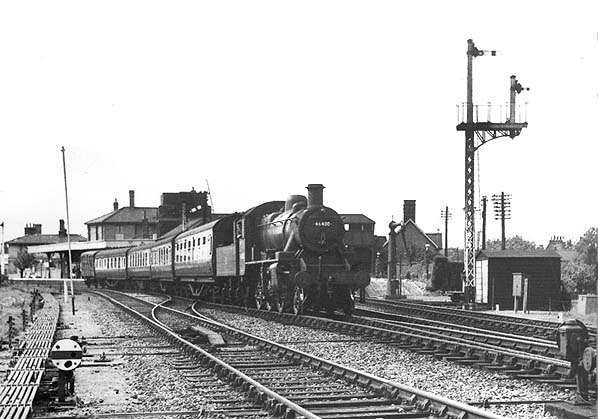
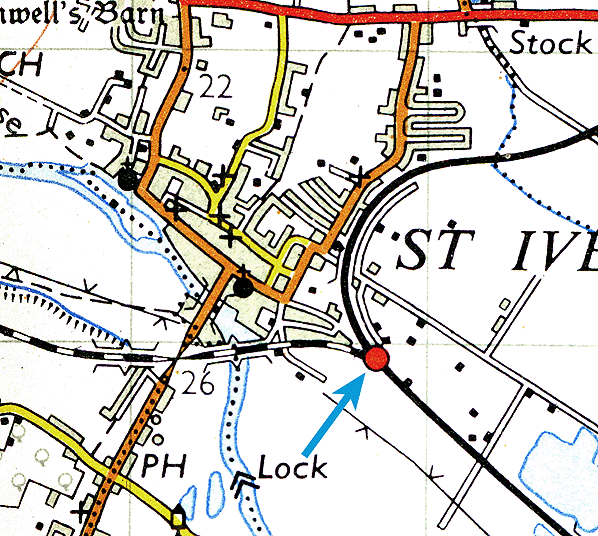
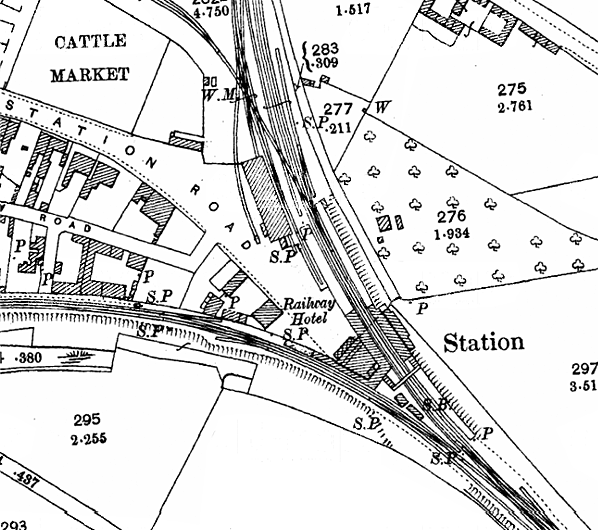
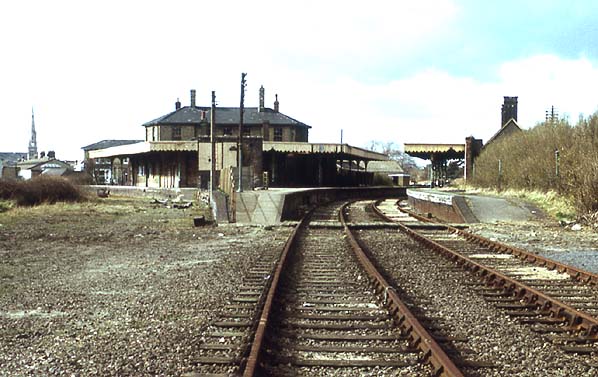
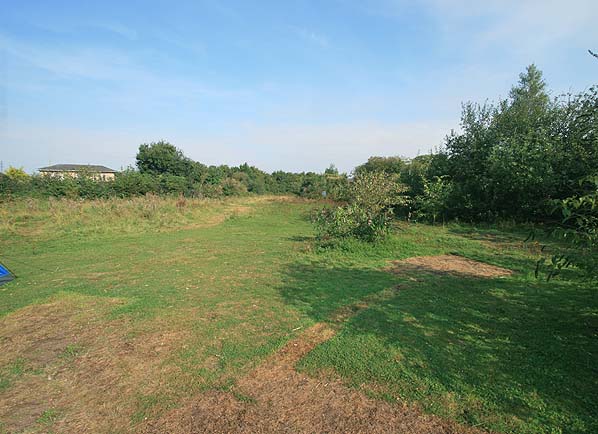
 Home Page
Home Page 






















